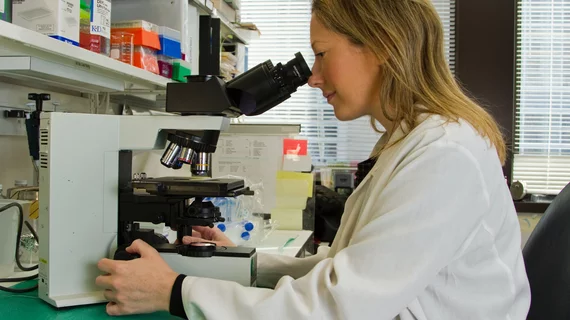Google Health, military collaborators set AI’s sights on breast cancer biomarkers
Researchers have used deep learning to assess three key biomarkers of existing breast cancers on routinely acquired histology slides. In the process, the team has advanced AI-based biomarker analysis for managing a range of cancers.
The breakthrough comes as part of an ongoing research project led by Google Health in collaboration with Naval Medical Center San Diego and the Henry M. Jackson Foundation for the Advancement of Military Medicine. It’s described in a study published Aug. 14 in Communications Medicine.
When scored together, the three critical biomarkers—estrogen receptor, progesterone receptor and human epidermal growth factor receptor 2 (ER/PR/HER2)—point treating physicians along appropriate care pathways in pursuit of optimal outcomes.
Currently available AI-aided scoring systems work well but can require additional slide preparation. What’s more, when the scores don’t align with expected biomarker findings, the discordances may call for costly and time-consuming repeat testing, the authors explain.
To design the new approach, co-corresponding authors David Steiner, MD, PhD, and Po-Hsuan Cameron Chen, PhD, both of Google Health, and colleagues trained and tested three deep learning algorithms on pathologist-annotated slides obtained from three separate data sources.
The training and validation datasets comprised more than 135 million slide portions (or “patches” of particular tissue regions) and almost 3,300 whole slides representing more than 1,200 cases at 37 sites.
In validation testing, the models had good to excellent predictive performance at both the patch and whole-slide levels.
In addition, the patch-level models “enabled multiple interpretability approaches to probe the features associated with the model’s predictions,” the authors report.
“Taken together, our modeling and interpretability results provide both qualitative and quantitative assessment of morphological features relevant to biomarker prediction in breast cancer, highlighting that deep learning approaches in pathology can be accurate, informative and interpretable,” Chen, Steiner and co-authors comment.
More:
[T]his study demonstrates generalizable deep learning models for predicting ER, PR and HER2 status in breast cancer from [histology slide] images and expands upon the growing body of literature for rapid biomarker estimation from routine histology slides. While further performance improvement and validation is still needed before automated breast cancer biomarker prediction models find their way to clinical workflows, initial utility may also be realized via research and quality control applications. Specifically, biomarker-based selection or triage of patients within large clinical trials could create substantial efficiency gains for therapy development pipelines.”
In a news release sent by the Jackson foundation, epidemiologist James Wren of that organization synopsizes the potential relevance of the new work for clinical care.
“Having an AI model that can interpret slides and predict biomarkers could help doctors determine the biomarker status of breast cancer and the right treatment more quickly and accurately,” he says. “It could also help scientists better understand how biomarkers impact tumor morphology.”
The study is available in full for free.

